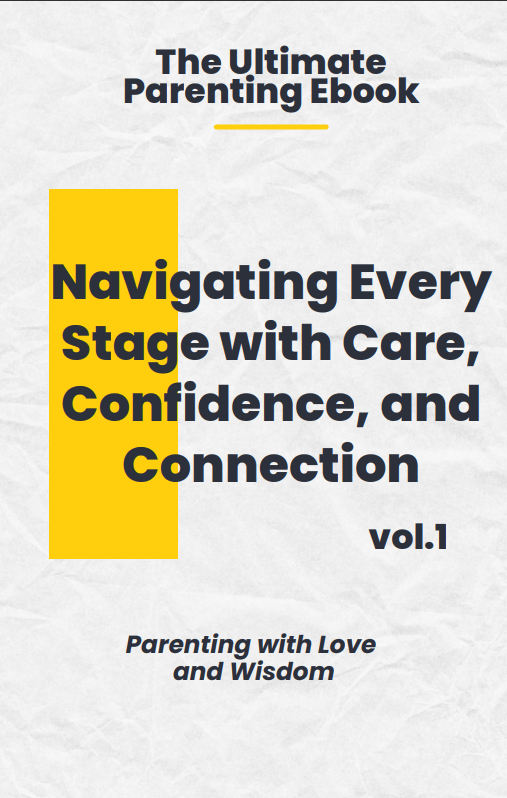Parenting in technicolor, how diversity enriches our family ties,’ delves into how embracing diversity enriches the parenting journey.

In today’s world, the image of the “typical” family is undergoing a profound transformation. Gone are the days when the nuclear family—mom, dad, and 2.5 kids—was the standard template. Instead, we’re seeing a vibrant mosaic of family structures emerge, reflecting the diverse tapestry of human experiences. From single parents navigating the challenges of raising children solo to blended families blending different backgrounds and cultures, the modern family landscape is more varied and dynamic than ever before.
Now, more than ever, it’s crucial to embrace this diversity in parenting structures. Why? Because it’s a reflection of the reality we live in—a reality where love knows no bounds and family is defined by connection rather than convention. Take co-parenting, for instance. It’s not just about divorced parents sharing custody; it’s about two individuals putting their differences aside to prioritize their children’s well-being. Think of the divorced couple who may no longer be together romantically but are still a united front when it comes to raising their kids—attending soccer games together, co-hosting birthday parties, and making joint decisions about their children’s education and health.
Then there are blended families, where the lines between “yours,” “mine,” and “ours” blur into a beautiful mosaic of relationships. Picture a family dinner where step-siblings bond over shared interests, or a holiday gathering where grandparents from different sides of the family come together to create cherished memories. In these families, love knows no bounds, and the ties that bind are forged not by blood, but by shared experiences and mutual respect.
And let’s not forget about the extended support networks that play a vital role in shaping the modern family landscape. From grandparents who provide sage advice and unconditional love to close friends who step in as honorary aunties and uncles, these extended family members and friends enrich the parenting journey in countless ways. Whether it’s offering a listening ear during tough times, providing practical assistance with childcare, or simply being a source of laughter and joy, their presence is felt in every aspect of family life.
In essence, exploring co-parenting, blended families, and extended support networks isn’t just about embracing alternative family structures—it’s about celebrating the beautiful tapestry of human relationships that make up the fabric of modern society. It’s about recognizing that love knows no bounds and that family is defined not by biology or tradition, but by the bonds of connection and the shared experiences that unite us all. So let’s open our hearts and minds to the rich diversity of family life, knowing that in doing so, we’re embracing the true essence of what it means to be a family.
In This Blog
Toggle1. Why should I choose Co-Parenting?

1. Defining Co-Parenting
Co-parenting: It’s more than just a buzzword; it’s a shared journey that redefines the meaning of teamwork when it comes to raising children. At its core, co-parenting is about putting aside differences and working together for the sake of the child. Whether it’s divorced parents navigating custody arrangements or unmarried partners consciously choosing to share parenting responsibilities, co-parenting is all about prioritizing the well-being and happiness of the little ones.
2. Benefits Of Co-Parenting
The benefits of co-parenting are manifold, extending far beyond the logistics of shared custody. By working together, parents can provide enhanced support and stability for their children, ensuring they feel loved and cared for in both households. From attending school events and doctor’s appointments to making major decisions about education and healthcare, co-parenting allows children to benefit from the collective wisdom and resources of both parents. And let’s not forget about the shared responsibilities that come with co-parenting. By dividing tasks such as discipline, homework help, and extracurricular activities, parents can lighten the load and prevent burnout, ensuring they have the energy and patience to be the best parents they can be.
3. Challenges Of Co-Parenting
Of course, co-parenting isn’t without its challenges. Communication, or lack thereof, can be a major stumbling block for many co-parents, leading to misunderstandings and conflicts. Consistency is another key issue, as different parenting styles and rules between households can create confusion for children. And then there’s conflict resolution, which requires patience, empathy, and a willingness to compromise—a tall order for even the most amicable of exes. But despite these challenges, countless parents are proving that co-parenting can work, and work well.
4. Real-Life Examples Of Thriving Co-Parenting Arrangements
Take Sarah and Mike, for example. Despite their divorce, they’ve made a conscious effort to put their differences aside and prioritize their son’s happiness. From weekly co-parenting meetings to shared Google calendars for scheduling, they’ve found creative ways to stay on the same page and ensure their son feels loved and supported in both households. And then there’s David and Lisa, who never married but are committed to raising their daughter together. Despite living in separate homes, they’ve created a seamless co-parenting arrangement that prioritizes their daughter’s well-being above all else.
In essence, co-parenting is a journey—one that requires patience, communication, and above all, a shared commitment to the children involved. While it may not always be easy, the benefits far outweigh the challenges, as evidenced by the countless success stories of thriving co-parenting arrangements. So here’s to the co-parents out there, navigating the ups and downs of parenthood together and proving that love truly knows no bounds.
2. How do Blended Families Foster Unity in Diversity?

A. Understanding The Dynamics Of Blended Families
Understanding the dynamics of blended families is like navigating a colorful mosaic of backgrounds and experiences. Unlike traditional families, blended families bring together individuals from different households, creating a rich tapestry of relationships. From step-siblings to half-siblings, each member contributes a unique perspective and set of experiences to the family dynamic. Imagine a family dinner where children from previous marriages share stories about their upbringing, weaving together a patchwork of memories and traditions.
B. Navigating The Complexities
Navigating the complexities of blended families requires patience, empathy, and a willingness to embrace differences. Building trust among family members is essential, as blended families often face challenges related to loyalty conflicts and divided loyalties. Fostering open communication and addressing conflicts head-on can help alleviate tensions and strengthen relationships within the family. By creating a safe and supportive environment where everyone’s voice is heard and respected, blended families can overcome obstacles and forge deeper connections.
C. Creating A Sense Of Belonging
Creating a sense of belonging is paramount in blended families, where children may struggle to find their place in a new household. Strategies for fostering cohesion and inclusivity include establishing family rituals and traditions that incorporate elements from each member’s background. Whether it’s celebrating cultural holidays or starting new traditions together, these shared experiences help foster a sense of unity and belonging. Imagine a blended family coming together to decorate the Christmas tree, each ornament representing a different aspect of their diverse heritage.
D. Celebrating Diversity
Celebrating diversity is not just about acknowledging differences; it’s about embracing the unique strengths and qualities that each family member brings to the table. In blended families, children may have siblings who look different, speak different languages, or practice different religions. Instead of viewing these differences as barriers, embracing diversity means recognizing them as opportunities for growth and learning. By encouraging children to celebrate their heritage and appreciate the differences that make them unique, blended families can create a culture of acceptance and inclusivity.
In essence, blended families are a testament to the power of love and resilience in overcoming adversity. By understanding the dynamics of blended families, navigating complexities with grace, fostering a sense of belonging, and celebrating diversity, these families can create harmonious and inclusive environments where every member feels valued and supported. So here’s to the blended families out there, weaving together the threads of love, acceptance, and diversity to create a beautiful tapestry of family life.
3. Do Extended Support Networks Enrich the Parenting Journey?
In the rollercoaster ride of parenthood, having a strong extended support network can make all the difference. These networks go beyond the nuclear family unit, encompassing grandparents, aunts, uncles, and close friends who offer love, guidance, and practical assistance along the way.

A. The Importance Of Extended Family And Community Support
The importance of extended family and community support cannot be overstated. In today’s fast-paced world, parents often juggle multiple responsibilities, from work demands to household chores, leaving little time for self-care or quality time with their children. Extended family members and friends step in to fill the gap, providing much-needed relief and support. Imagine a single parent who relies on their parents to pick up their children from school or a working couple who enlist the help of trusted friends for occasional babysitting.
B. Roles Of Grandparents, Aunts, Uncles, And Close Friends In Parenting
Grandparents, aunts, uncles, and close friends play unique roles in parenting, offering diverse perspectives and experiences that enrich the lives of both parents and children. Grandparents, for example, provide a wealth of wisdom and unconditional love, serving as role models and confidants for their grandchildren. Aunts and uncles bring playful energy and often serve as mentors or surrogate parents, offering guidance and support during key developmental stages. Close friends become like family, offering a shoulder to lean on and a listening ear when times get tough.
C. Building Strong Support Networks
Building strong support networks requires effort and intentionality. Cultivating relationships with extended family members and friends takes time and commitment, but the payoff is invaluable. Regular communication, quality time spent together, and mutual respect are essential for nurturing these connections. Whether it’s hosting a weekly family dinner or organizing a playdate with friends, finding ways to stay connected helps strengthen bonds and create a sense of belonging.
D. The Impact Of Extended Support On Children’s Well-Being And Development
The impact of extended support on children’s well-being and development is profound. Research shows that children who have strong relationships with extended family members and friends tend to have higher self-esteem, better social skills, and improved academic performance. They also learn valuable life lessons from a diverse range of role models, gaining exposure to different cultures, traditions, and perspectives along the way.
4. How to Overcome Challenges and Embrace Opportunities
Despite the many benefits of co-parenting, blended families, and extended support networks, they are not without their challenges. Communication breakdowns, conflicts over parenting styles, and logistical issues can strain relationships and create tension within the family. However, by acknowledging these challenges and seeking support when needed, parents can overcome obstacles and strengthen their bonds.
Professional guidance, such as counseling or therapy, can be instrumental in navigating complex family dynamics and resolving conflicts. Support groups and online communities also offer valuable resources and a sense of solidarity for parents facing similar challenges. By approaching challenges with resilience, empathy, and a willingness to learn, parents can transform obstacles into opportunities for growth and connection.
Here are some useful strategies to overcome these challenges.
- Open Communication
- Schedule regular meetings or check-ins to discuss parenting issues and concerns.
- Use communication tools like email, text messaging, or co-parenting apps to keep each other informed.
- Practice active listening and empathy to understand each other’s perspectives.
- Flexibility
- Develop a flexible parenting plan that allows for adjustments when necessary.
- Keep the child’s best interests in mind when making decisions.
- Putting the Child’s Needs First
- Focus on what is best for the child rather than personal differences or conflicts.
- Set aside egos and prioritize cooperation for the sake of the child’s well-being.
- Seek professional mediation or counseling if necessary to resolve disputes and maintain focus on the child.
- Seeking Outside Support
- Attend co-parenting classes or workshops to learn effective communication and conflict-resolution skills.
- Enlist the help of a mediator or counselor to facilitate discussions and find solutions to co-parenting challenges.
- Join a support group or online community for co-parents to share experiences, advice, and encouragement.
Conclusion
In conclusion, co-parenting, blended families, and extended support networks represent diverse and dynamic expressions of modern family life. By embracing these non-traditional family structures and nurturing strong relationships within them, parents can create loving, supportive environments where children can thrive. Despite the challenges they may encounter along the way, the journey of parenthood is ultimately enriched by the bonds of love, resilience, and connection forged within these unique family units. As we continue to navigate the ever-changing landscape of family, let us celebrate the diversity of human experience and the power of unity in parenthood.
You may also be interested in : Single Dad: Strategies To Delete 99.9% Of Your Problems
FAQs
1. What is co-parenting, and how does it differ from traditional parenting?
Co-parenting involves two or more individuals, often divorced or separated parents, working together to raise a child. Unlike traditional parenting, where both parents reside together, co-parenting requires effective communication and cooperation despite living separately.
2. What are some benefits of co-parenting for children?
Co-parenting can provide children with stability, consistency, and access to a broader support system. It allows them to maintain strong relationships with both parents, even if they live in separate households, and promotes a sense of security and well-being.
3. What are some common challenges of co-parenting, and how can they be overcome?
Challenges of co-parenting may include communication breakdowns, disagreements over parenting decisions, and logistical issues. Overcoming these challenges often requires open communication, flexibility, and a commitment to putting the child’s needs first.
4. What is a blended family, and how can they create a sense of unity in diversity?
Blended families consist of individuals from different backgrounds and experiences coming together to form a new family unit. Strategies for fostering unity in blended families include building trust, addressing conflicts, and celebrating each family member’s unique strengths and contributions.
5. What role do extended support networks play in parenting beyond the nuclear family?
Extended support networks, including grandparents, aunts, uncles, and close friends, provide invaluable assistance and guidance to parents and children. They offer love, support, and practical help, enriching the parenting journey and creating a sense of community and belonging.
6. How can parents navigate societal stigmas and misconceptions surrounding non-traditional family structures?
Navigating societal stigmas and misconceptions may require educating others about the diverse nature of modern families and challenging outdated beliefs. By fostering open-mindedness and promoting acceptance, parents can help create a more inclusive and supportive environment for all families.
7. What resources are available for parents seeking professional guidance and support?
Parents seeking professional guidance and support can turn to counselors, therapists, and support groups specializing in co-parenting, blended families, and non-traditional parenting arrangements. These resources offer valuable tools, strategies, and emotional support for navigating the challenges of modern family life.




